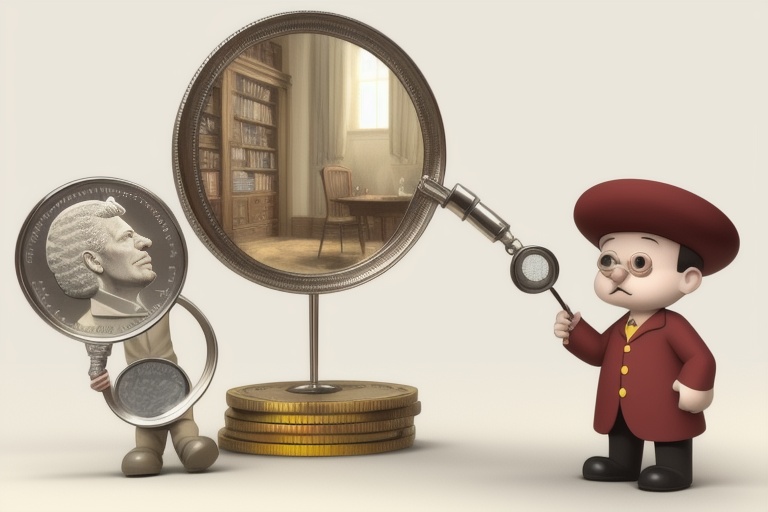Understanding the Visionaries Behind U.S. Coin Designs
Understanding the Visionaries Behind U.S. Coin Designs
The U.S. Mint has been graced with the talents of several Chief Engravers, each of whom has made significant contributions to the fabric of American numismatics. Their artistic vision and technical expertise have culminated in the creation of coinage that goes beyond monetary value, capturing pivotal moments in history and the essence of a nation. By examining the work of each Chief Engraver, we gain insights into the evolution of coin design and its reflection of American identity through the years.
The First Chief Engraver
Robert Scot, assuming office as the first Chief Engraver from 1793 to 1823, set the high standard for coinage aesthetics with the Flowing Hair and Draped Bust coinages. His pioneering efforts laid the cornerstone for his successors, establishing a tradition of artistic excellence at the Mint.
Building a United Coinage
William Kneass, succeeding Scot in 1824, continued to sculpt the face of American currency until 1840. Kneass refined the vision of American coinage with the Coronet Liberty Head design. His tenure brought not only aesthetic unity but also recognizable elegance to the emerging nation's money.
Artistic Prowess and Lasting Legacy
It was Christian Gobrecht who, during his 1840 to 1844 Chief Engravership, introduced the acclaimed Seated Liberty design—a testament to his artistic prowess. Although his service was brief, Gobrecht's legacy endured for decades, a clear indication of the profound impact a single design can have on numismatic culture.
A Period of Rich Innovation
Perhaps the most well-celebrated in the list, James B. Longacre led from 1844 until 1869. Innovations like the renowned Indian Head cent and the Flying Eagle cent sprang from Longacre's ability to adapt artistically, ensuring that the nation's coinage consistently reflected contemporary artistry.
Post-Civil War Aesthetic
In the period following the Civil War, William Barber assumed the role from 1869 to 1879. His legacy is marked by the enduring beauty of the Liberty Seated and Trade Dollar coins—designs that captured not only the aesthetic perspective of the era but also the hopeful spirit of a country in reconstruction.
The Barber Era
Following in his father's footsteps, Charles E. Barber served from 1880 until 1917. His minimalist yet graceful coin designs, such as the Barber dime, quarter, and half dollar, remain popular among collectors for their understated elegance and classic appeal.
The Morgan Silver Dollar
Taking over after Barber, George T. Morgan’s term from 1917 to 1925 gave us the Morgan silver dollar, a coin synonymous with the height of American numismatics. Morgan's intricate work elevated coin engraving to a form of high art, captivating collectors and non-collectors alike.
Streamlined Modernity
From 1925 to 1947, John R. Sinnock brought a modern and streamlined aesthetic to U.S. coinage with designs like the Franklin half dollar. His vision aligned with the streamlined sensibilities of the time, reflecting America’s transition into modernity.
A Tribute to Kennedy
Gilroy Roberts' term as Chief Engraver, from 1948 to 1964, was highlighted by his design of the Kennedy half dollar—a poignant tribute developed in the wake of President John F. Kennedy's assassination. The coin struck a chord with a nation in mourning, serving as a memorial and a piece of history.
The Gasparro Years
Frank Gasparro took the helm from 1965 to 1981, during which time he created the revered Lincoln Memorial cent design, among others. His meticulous attention to detail and the ability to encapsulate an era’s spirit made his contributions especially significant for collectors.
Breaking Ground
With her appointment in 1981, Elizabeth Jones became the first woman to become Chief Engraver, a position she held until 1991. The introduction of the American Silver Eagle bullion coin was among her notable achievements, marking a significant moment for diversity within the profession.
Modern Craftsmanship
John Mercanti, who served from 2006 to 2010, is celebrated for his exceptional artistry, which can be seen in the American Silver Eagle reverse and other coinage and medals—a contribution that spans over a hundred designs and demonstrates the continued vibrancy of modern coinage.
Today and Tomorrow
Currently, Joseph Menna, since 2019, holds the prestigious title. His work exemplifies a continued commitment to the tradition of intricate design and innovation at the Mint, with collectors eagerly anticipating his creations.
Each of these visionary engravers has played a crucial role in shaping the rich tapestry of American coin collecting. Their distinctive styles and contributions have not only defined the aesthetic and historical narrative of U.S. coinage but have also ensured that the very act of coin collecting remains an accessible and enjoyable pursuit for the public. Through their art, we hold tangible pieces of American history and achievement, a legacy that both beginners and seasoned collectors treasure. As interest in numismatics continues to thrive, so too does the appreciation for the skill and creativity of the Chief Engravers and the enduring value of their masterpieces.
Information for this article was gathered from the following source.

